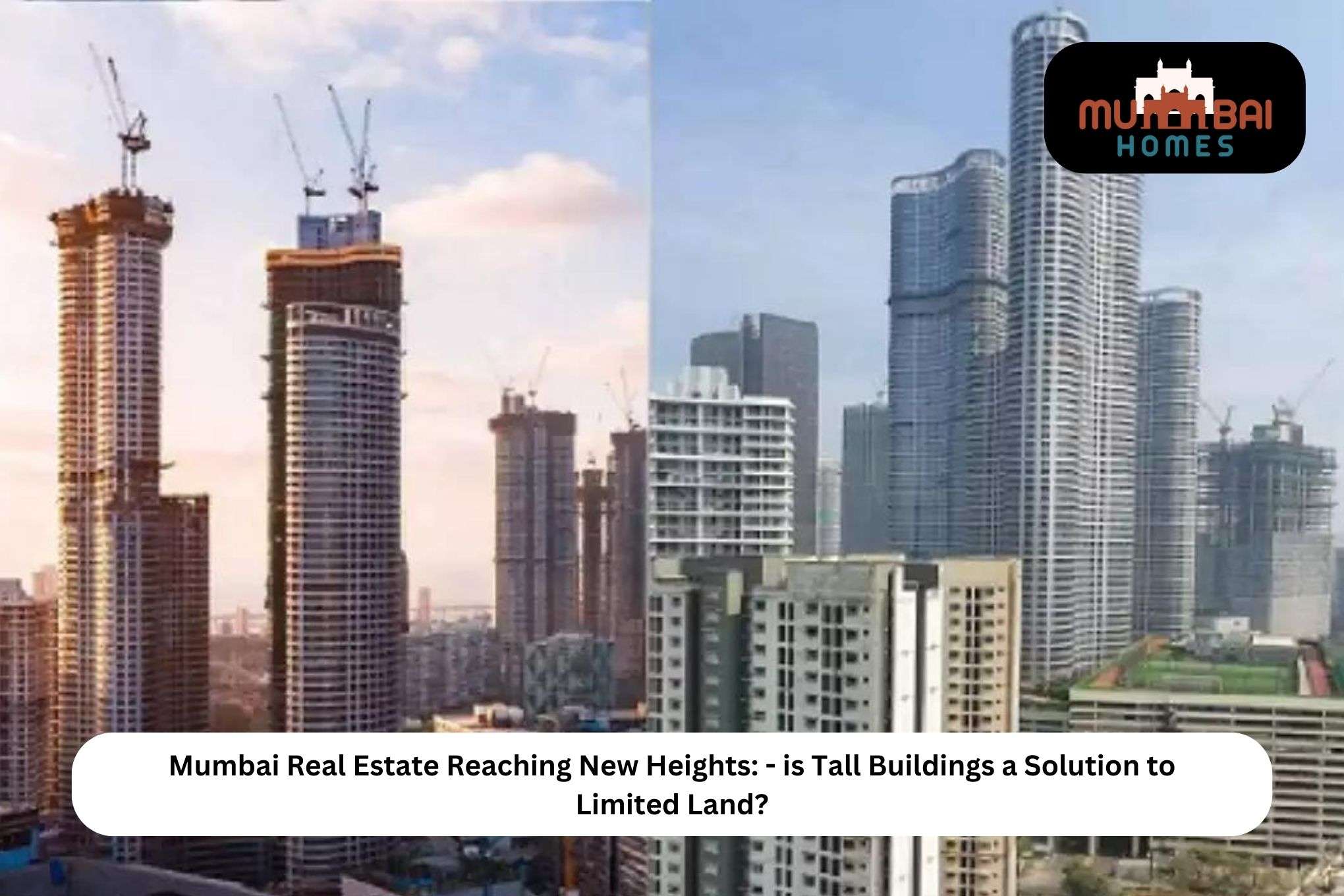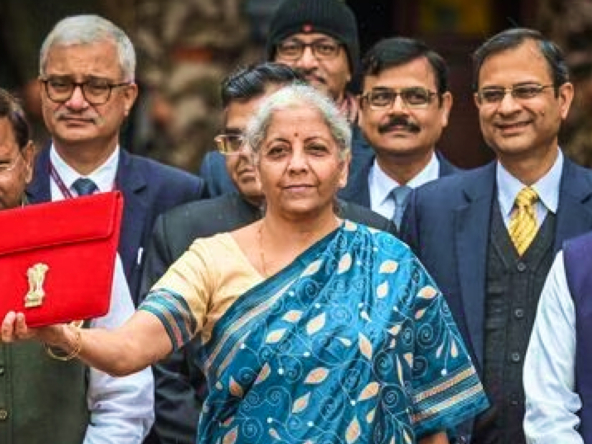Mumbai Real Estate Reaching New Heights: – is Tall Buildings a Solution to Limited Land?
Mumbai, India’s financial capital, has long grappled with the problem of limited land availability. With a growing population and a booming economy, the demand for real estate has exploded, putting enormous pressure on the city’s space constraints. To address this issue, real estate developers and planners are increasingly looking to tall structures as a potential option to maximize land use and satisfy the expanding requirements of residents and companies. This blog explores the concept of tall buildings as a remedy for land limitation in Mumbai Real Estate and examines the benefits, challenges, and implications of vertical expansion.
1. The Need for Vertical Expansion:
There is a pressing need to investigate alternative methods of urban development in Mumbai due to the city’s rapid urbanization and population expansion. High-rise buildings offer a unique opportunity to make the most of limited land resources by building vertically rather than horizontally, thus meeting the growing demand for housing, offices and infrastructure while limiting encroachment on surrounding green spaces and agricultural lands. This approach promotes higher population density and optimal use of available space, helping to alleviate the constraints of limited land availability in Mumbai Real Estate.
2. Addressing Population Density:
The ability of towering structures to house many people on a smaller footprint is one of its key advantages. By opting for vertical construction, Mumbai can overcome the challenges of population density and urban sprawl. A large number of residents can live in high-rise structures, which eliminates the requirement for horizontal city expansion to the outskirts. This makes it possible to maximize the use of available space in already developed urban areas, thus avoiding fragmentation of the territory, and preserving agricultural and green areas. By concentrating the population in vertical structures, Mumbai Real Estate can also offer increased accessibility to services and infrastructure, while reducing congestion and displacement problems associated with extensive horizontal expansion. Building skyscrapers is therefore a promising solution to the challenge of population density in Mumbai Real Estate.
3. Optimizing Land Economics:
Developers can maximize their return on investment by building higher structures, as they can accommodate more units or offices on a smaller land surface. This economic advantage encourages the construction of skyscrapers in privileged locations, thus contributing to the city’s real estate growth. By optimizing the use of vertical space, high-rise buildings make it possible to maximize the value of the land, which is essential in a real estate market as competitive as Mumbai Real Estate. In addition, these vertical structures offer the possibility of creating commercial spaces, such as shopping centers or offices, which generate additional revenue. In short, building skyscrapers is an economic strategy to optimize Mumbai’s land economy and stimulate Mumbai Real Estate development.
4. Efficient Infrastructure Utilization:
The vertical expansion makes it possible to optimize the use of existing infrastructure in an efficient manner. Concentrating buildings vertically, reduces the need for extensive transport and utility systems, as residents and businesses are clustered in a smaller area. In addition, by avoiding horizontal expansion, Mumbai Real Estate can avoid the need to build expensive new infrastructure over longer distances, contributing to a more sustainable and efficient use of existing resources.
5. Iconic Landmarks and Urban Identity:
Tall buildings can become iconic landmarks that shape a city’s identity and horizon. Mumbai can capitalize on building skyscrapers to create its own distinctive urban identity and strengthen its status as an international metropolis. These iconic structures become symbols of progress, modernity, and economic vitality, helping to shape the image and reputation of the city. The addition of these landmarks to the Mumbai Real Estate landscape gives the city a distinctive presence and tourist appeal while establishing its position as a major cultural and economic center.
6. Challenges and Implications:
While tall buildings offer potential solutions to limiting land availability, several challenges and implications need to be considered. These include the following:
A. Infrastructure Strain:
Increased demand from high-rise buildings in Mumbai Real Estate can put pressure on existing infrastructure networks if they are not adequately planned and improved. Transportation systems, water, sanitation, and electrical systems may require upgrades to meet the increased needs of these tall buildings. Rigorous urban planning and appropriate infrastructure investments are essential to address these challenges and ensure the smooth development of the city.
B. Environmental Impact:
Tall buildings consume a significant amount of energy for heating, cooling, and lighting, and their shadows can affect natural light and surrounding areas in Mumbai Real Estate. It is therefore essential to find a balance between environmental sustainability and vertical expansion. Energy usage must be decreased, and renewable energy sources must be encouraged. Smart high-rise building design can help to reduce environmental impact and promote environmentally friendly urban development by considering energy efficiency and sustainable resource utilization.
C. Social Considerations:
Concentrated population density can impact the quality of life, intimacy and community dynamics. Planning social spaces, green spaces, and public facilities is essential to creating a livable environment. Efforts must be made to ensure meeting and social interaction zones, as well as green spaces for relaxation and recreation. It is also important to promote social and economic diversity in high-rise buildings in order to preserve diversity and inclusion in urban communities in Mumbai Real Estate.
D. Safety:
Tall buildings must comply with strict safety regulations and be designed to withstand natural disasters. It is crucial to put in place disaster preparedness measures such as fire detection systems, adequate emergency exits, and emergency management protocols. Effective coordination with local authorities and emergency services is also necessary to ensure a rapid and effective response in case of need in Mumbai Real Estate.
Conclusion:
Tall buildings can certainly be a solution to the limited availability of land in Mumbai Real Estate. By building vertically, the city can accommodate its growing population, optimize land use and create iconic landmarks. However, careful planning, consideration of environmental and social impacts, and investments in supporting infrastructure are essential. It is important to balance urban development with sustainability, ensuring that tall buildings contribute to a better quality of life for residents and preserve Mumbai Real Estate.
FAQs,
1. Are tall buildings an effective solution to Mumbai’s limited land availability?
Ans: Yes, tall structures provide a solution by maximizing land use and fitting a larger population into a smaller footprint.
2. What are the benefits of constructing tall buildings in Mumbai?
Ans: Tall structures help with population density, improve land economics, make optimal use of the city’s existing infrastructure, and add to the city’s famous skyline.




